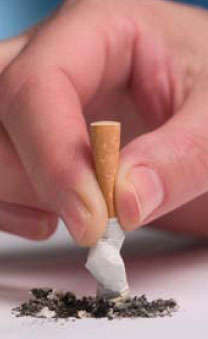
A study by Drs. Gillinder Bedi and Harriet de Wit of the University of Chicago and Drs. Kenzie Preston, David Epstein, and Stephen Heishman of the NIDA Intramural Research Program provided initial evidence that drug-dependent humans can experience “incubation” of cue-induced craving. The phenomenon— an increasing susceptibility to drug cues during the first months of abstinence—has been documented repeatedly in animals. The issue has important clinical implications, suggesting that cues may continue to act as a potent trigger for relapse well past the initial period of withdrawal.
The 86 participants in the study were daily smokers who were not seeking treatment and were paid to quit for 7, 14, or 35 days. They came to the laboratory daily for tests to confirm abstinence, and the researchers measured their craving responses to cues on the last day of their participation. One group also participated in repeated cue tests on days 7, 14, and 35. The cues consisted of holding a lit cigarette and looking at photos of cigarettes, and participants rated their craving before and after cue exposure.
The cue-induced craving was roughly twice as strong after 35 days of abstinence as it was after 1 week. Moreover, the craving increased over this period even though the smokers’ urges to light up in the absence of cues steadily weakened, dropping by more than 25 percent over 5 weeks.
Biological Psychiatry 69(7):708– 711, 2011. Abstract Available
